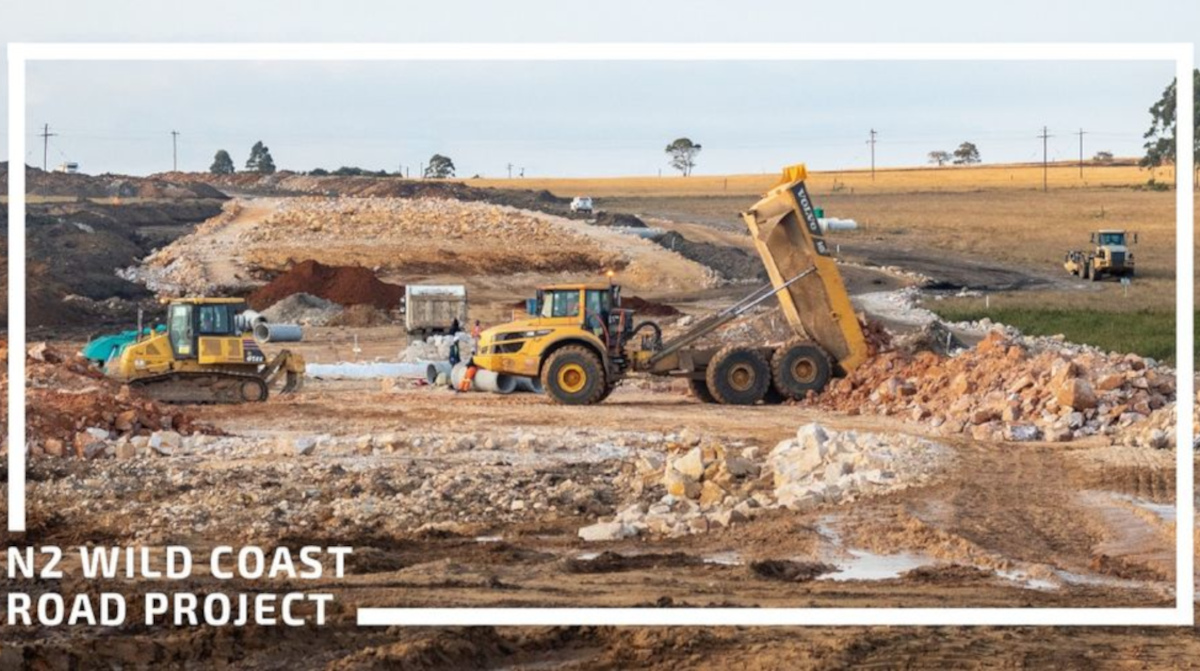SANRAL’s multi-billion rand N2 Wild Coast Road (N2WCR) project is one of the agency’s most ambitious yet.
It stretches 410km from the Gonubie Interchange in East London to the Mtamvuna River near Port Edward.
The N2 connects four provinces – Western Cape, Eastern Cape, KwaZulu-Natal and Mpumalanga – traversing the cities and towns of Cape Town, George, Knysna, Gqeberha (Port Elizabeth), East London, Mthatha, Durban and Ermelo.
Safer and faster link
The new N2WCR will open up the coastal strip between Port St Johns and Port Edward, while also providing a safer, flatter and faster link between Durban and the industrial centres of East London and Gqeberha.
The N2WCR project will benefit businesses operating along the entire east coast, as well as stimulating development of the Wild Coast.
The socio-economic impact of the N2WCR project on nearby communities is significant.
Upgrading of lower-order roads in the villages near the new route and linking these to the new N2 has already translated into R120 million worth of opportunities for community development projects by local SMMEs, with several more projects in the pipeline.
Mobility is extremely challenging for residents living in the rural villages along the N2WCR.
It is one of South Africa’s most scenic areas, but also one of its poorest.
Breadwinners and learners must commute long distances for work and school, and to access other services that require travel, spending hours in buses and taxis.
The N2WCR will be approximately 69km and 85km shorter than the current N2 and R61 routes, respectively.
The new highway, supported by the road access management system linking this high-order road with lower-order roads, will be an important first step to safer, more convenient travel, access to social services and economic opportunities, and a better quality of life.
Environmental impact
Another noteworthy aspect of this project is the attention to environmental impact.
The N2 Wild Coast Region Biodiversity Offset Programme will result in the Silaka and Mkhambathi nature reserves being expanded, and lead to the creation of several new protected areas in the Pondoland Centre of Floral Endemism totalling approximately 20 000H (200km2).
Work on the N2 Wild Coast Project will lead to the creation of 8 000 direct full-time jobs and between 21 000 and 28 000 indirect jobs during the construction phase.
This translates to a wage bill of around R750 million.
Both skilled and semi-skilled people have already been employed on this project.
Once the road is completed, ongoing maintenance work is anticipated to create another 900 direct, full-time jobs and around 19 000 indirect jobs.
Will this encourage you to visit the area more often?
Let us know by clicking on the comment tab below this article or by emailing info@thesouthafrican.com or sending a WhatsApp to 060 011 021 1
Subscribe to The South African website’s newsletters and follow us on @TheSAnews on X and The South African on Facebook for the latest news.
